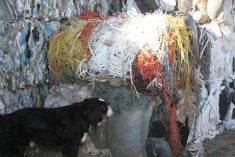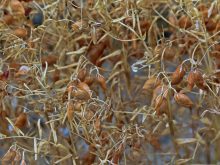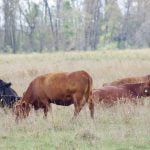WATERLOO, Ont. – The Canadian cattle industry faces sharply higher grading costs after April 1, 1996 when the grading system moves from public to private control, says the man overseeing the switch.
Charlie Gracey, hired by the Canadian Cattlemen’s Association this year to design a grading system run by the industry, said last week costs paid by farmers and packers will soar by at least 50 percent and in some cases, more than double.
The reason is that on April 1, the federal government will quit subsidizing the system. This year, the subsidy is worth close to $3 million.
Read Also

Canadian farmers need level playing field for regulations – says Minister MacDonald
Federal agriculture minister Heath MacDonald is urging the Canadian Food Inspection Agency and the Pest Management Regulatory Agency to speed up their decision making.
Losing subsidy hurts
Gracey told the annual CCA convention Aug. 10 that the private system will be less expensive than the public system in total, but it will cost users more because of the loss of the subsidy.
“Overall, the cost of grading will go down but the industry will pay more,” he said.
Gracey said he expects the costs to be split equally between producers and packers. It could work out to close to $1 million annually on the more than two million head graded.
The grading system, to be run by a private sector Beef Carcass Grading Agency, will operate to the same standards the public system now uses, he said.
Many of the graders are expected to move from the public to private sector.
The move to the private sector is happening because Ottawa has decided to charge the industry for all the costs of the grading system.
Producers and packers have decided they can do it more cheaply on their own.
The switch will be gradual. The agency will be created this October and will become responsible for grading April 1.
For the next year, Agriculture Canada will continue to offer training, supervision and monitoring services to make sure the transition is working. The industry will pay the department $52 per hour for those services.
Until April 1, 1998, and perhaps beyond, the federal government will continue to employ a national grades standards officer, paid for by the industry, to oversee the grading system.
Gracey said to keep the credibility of the system, he hopes the agriculture department will continue to house the overseer well past 1998.
High volume, low price
He said once users are paying full fare, farmers shipping to high-volume packing plants will pay less than farmers selling to low-volume, high-cost plants.
Gracey, former CCA general manager hired back when a five-year term on the Canadian International Trade Tribunal ended, said he expects costs at high-volume plants handling 200,000 head annually to be 78 cents per carcass graded compared to 86 cents at medium-volume plants and $1.28 at low-volume plants handling less than 20,000 animals.
Most of the high-volume plants, which handle 67 percent of Canadian grading, are in Alberta and Ontario.














